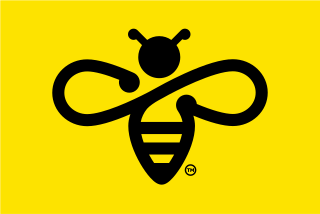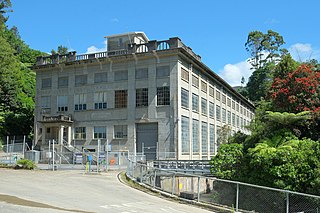
Te Āpiti is a wind farm owned and operated by Meridian Energy. It is located on 11.5 km² of land north of the Manawatū Gorge in the North Island of New Zealand. At 90.75 MW, it was New Zealand's largest capacity wind farm until September 2007, when the third stage of the nearby Tararua Wind Farm was completed.

Mercury NZ Limited is a New Zealand electricity generation and multi-product utility retailer of electricity, gas, broadband and mobile telephone services. All the company's electricity generation is renewable. Mercury has a pre-paid electricity product sub-brand GLOBUG. Mercury Energy is also the largest electricity retailer in New Zealand.

Contact Energy Limited is a New Zealand electricity generator, a wholesaler of natural gas, and a retailer of electricity, natural gas, broadband and LPG.

Te Rere Hau is a wind farm owned and operated by New Zealand Windfarms Ltd. It is situated on the Tararua Ranges, approximately 11 km east of Palmerston North in New Zealand.

Wind power constitutes a small but growing proportion of New Zealand's electricity. As of November 2023, wind power accounts for 1m059 MW of installed capacity and over 6 percent of electricity generated in the country.

The Tararua Wind Farm is a wind farm owned and operated by Mercury NZ Ltd. It is located on 700ha of farmland on the Tararua Ranges of New Zealand. It has become New Zealand's largest capacity wind farm, with a total capacity of 161MW.

Mangahao Power Station is a hydroelectric power station near the town of Shannon, New Zealand. After being delayed by war, access road construction and foundation testing was started by late 1919 and the station opened in November 1924. It makes use of the Mangahao River, through a series of tunnels and pipelines totalling 4.8 kilometers in the Tararua Ranges. It is jointly owned and operated by Todd Energy and King Country Energy.

The Ōtāhuhu power station was a power station site located in Ōtara, Auckland, New Zealand. Two plants operated on the site: Ōtāhuhu A and Ōtāhuhu B. A proposed third station, Ōtāhuhu C, was never built. The stations were owned by Contact Energy.
Turitea Wind Farm is a 222-megawatt wind farm near Turitea, Palmerston North, New Zealand. The farm is owned and operated by Mercury Energy.

The Mahinerangi Wind Farm is a wind farm on the north side of Lake Mahinerangi, around 50 km west of Dunedin, in Otago, New Zealand. Stage one of the wind farm, generating 36 MW, was commissioned in March 2011, and an additional 160 MW is consented to be commissioned in further stages.
Project Hayes was a controversial wind farm proposed for the Lammermoor Range of Otago, New Zealand. The project was developed by Meridian Energy from 2006 to 2012 at a cost of $8.9 million.

Mill Creek Wind Farm is a wind farm in the Ohariu Valley near Wellington, New Zealand.
The Kaiwera Downs Wind Farm is a wind farm in the Southland region of New Zealand. It is consented to have a maximum capacity of 240 MW and use up to 83 turbines. Originally proposed by Trustpower, it is now owned and operated by Mercury Energy. The 10 turbine, 43 MW stage 1 of the project was opened in November 2023.

The Harapaki Wind Farm is a wind farm project in the Hawke's Bay region of New Zealand. Construction began in June 2021 and is expected to continue for three years.
The Awhitu Wind Farm is a renewable energy project in New Zealand initially planned by Tilt Renewables. The development is proposed to be located on the Awhitu Peninsula near Waiuku on the west coast south of Auckland. As of 2016 the project was being privately pursued.

WEL Networks Limited is an electricity distribution company, serving the northern and central Waikato region of New Zealand. WEL is the sixth largest electricity distribution company in New Zealand, with 100,142 connections and 7,021 km (4,363 mi) of lines and underground cables. The company is 100% owned by the WEL Energy Trust.
The Waipipi Wind Farm is a wind powered electricity generation project in New Zealand owned and operated by Mercury NZ Ltd. This site is located between Patea and Waverley in South Taranaki. The wind farm consists of 31 wind turbines over 980 hectares, generating up to 133 MW at a cost of approximately $277 million. The 4.3 MW machines are the largest wind turbines installed in New Zealand.
The Puketoi Wind Farm is a proposed wind farm project in the Tararua District of New Zealand. The project is planned by Mercury Energy.
The Southland Wind Farm is a proposed wind farm on Slopedown in The Catlins in the Southland District of New Zealand.













